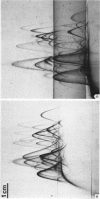Abstract
The precipitating antibodies in the sera of fifteen patients with chronic mucocutaneous candidiasis were examined by crossed immunoelectrophoresis with intermediate gel. The method permitted identification and quantitation of precipitins against thirty-four of the seventy-eight known antigenic components of Candida albicans.
The sera from every patient contained precipitins and the number of reactivities per serum ranged from two to thirty-nine. All patients had antibodies to antigen 78, a mannan–protein complex. Many sera also possessed antibodies to many other components of the organism, suggesting that some of the yeast cells had been disrupted in the patients' tissues. However, there were no precipitin profiles that characterized patients with specific forms of chronic candidiasis. Instead, in two cases, the antibody profiles appeared to be related to the patients' ability to develop humoral immune responses. Serial studies of patients during remissions and exacerbations showed that there were no consistent changes in antibody activities.
The role of Candida precipitins in chronic candidiasis remains uncertain. Possible functions include prevention of dissemination of the infection from superficial sites, formation of immune complexes in superficial sites and suppression of cell-mediated immunity as suggested by in vitro tests.
Full text
PDF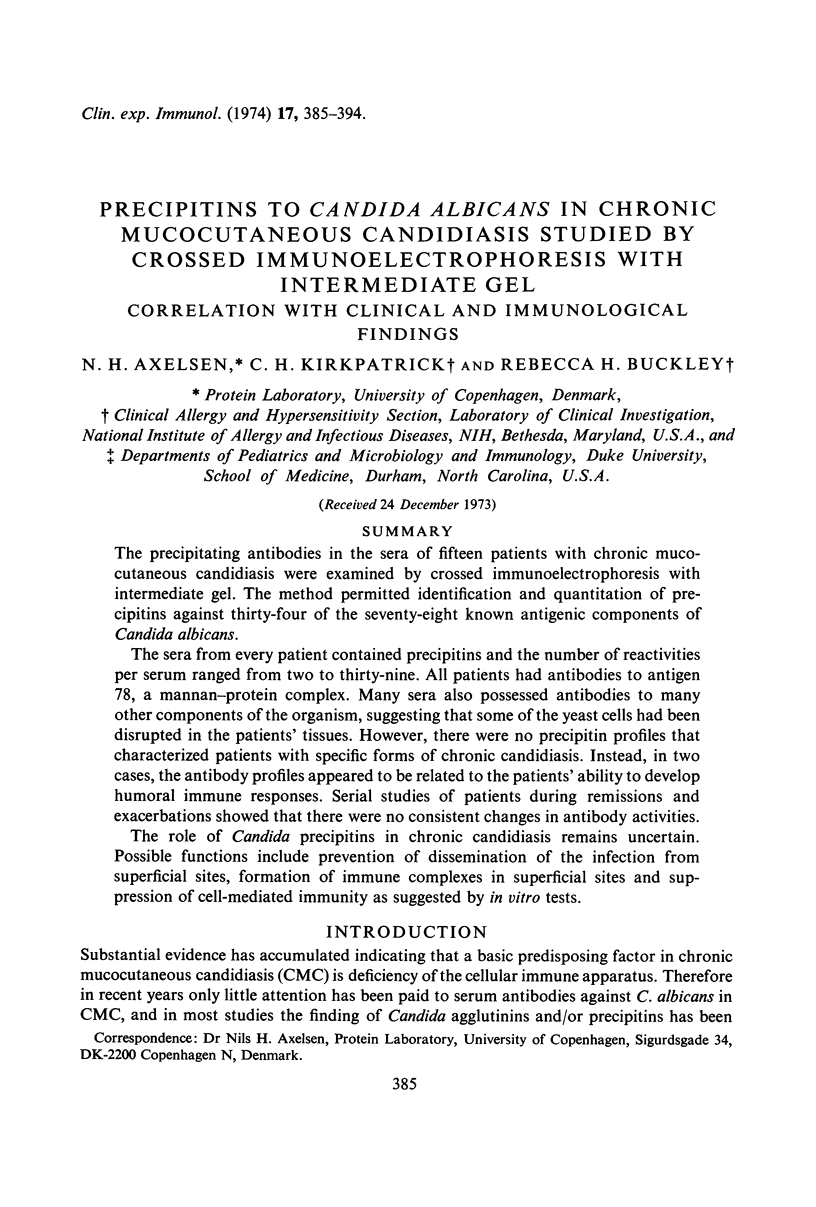
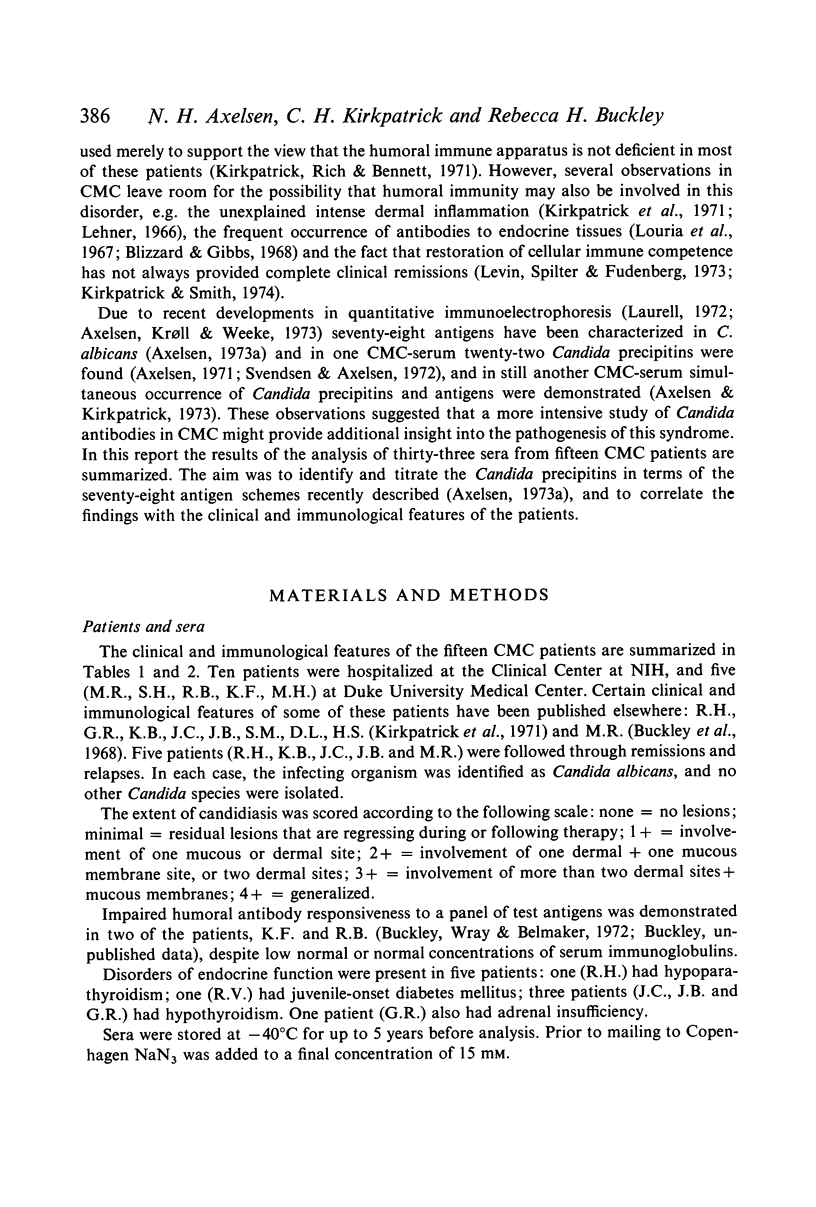
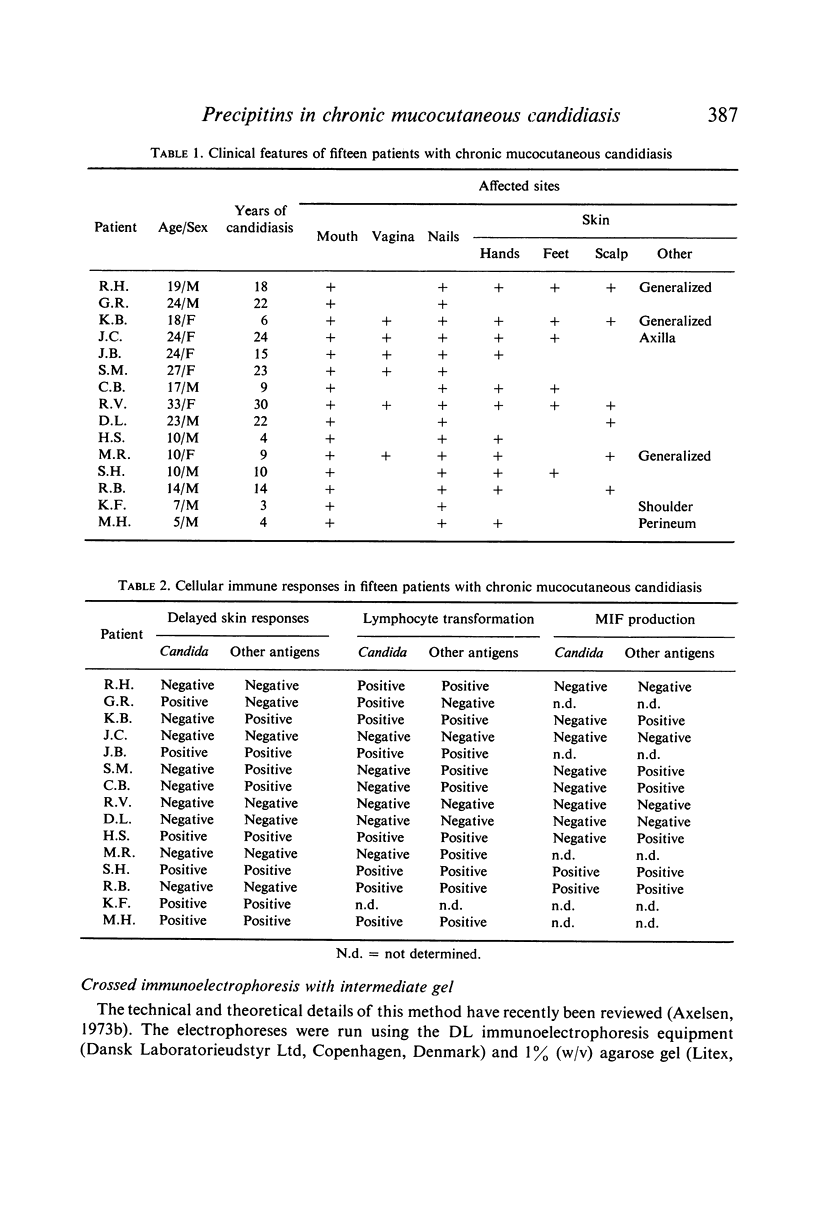
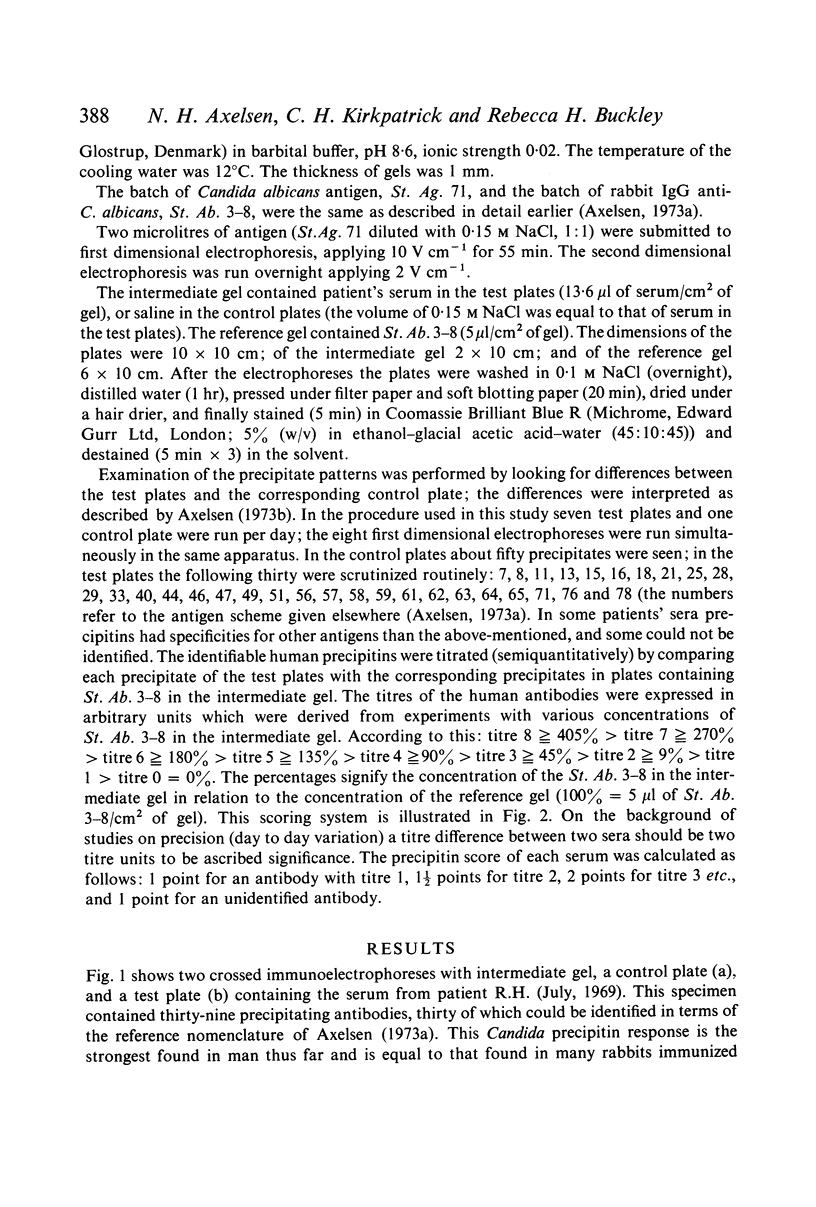
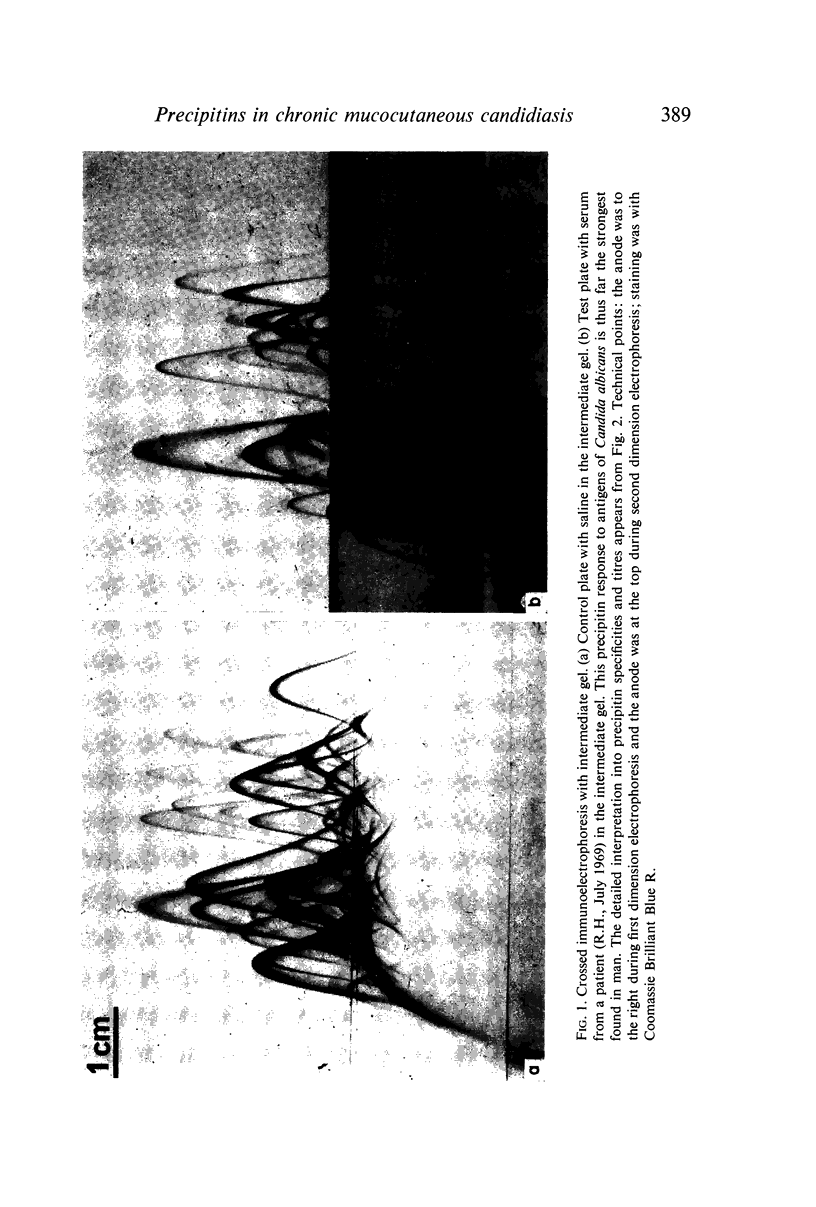
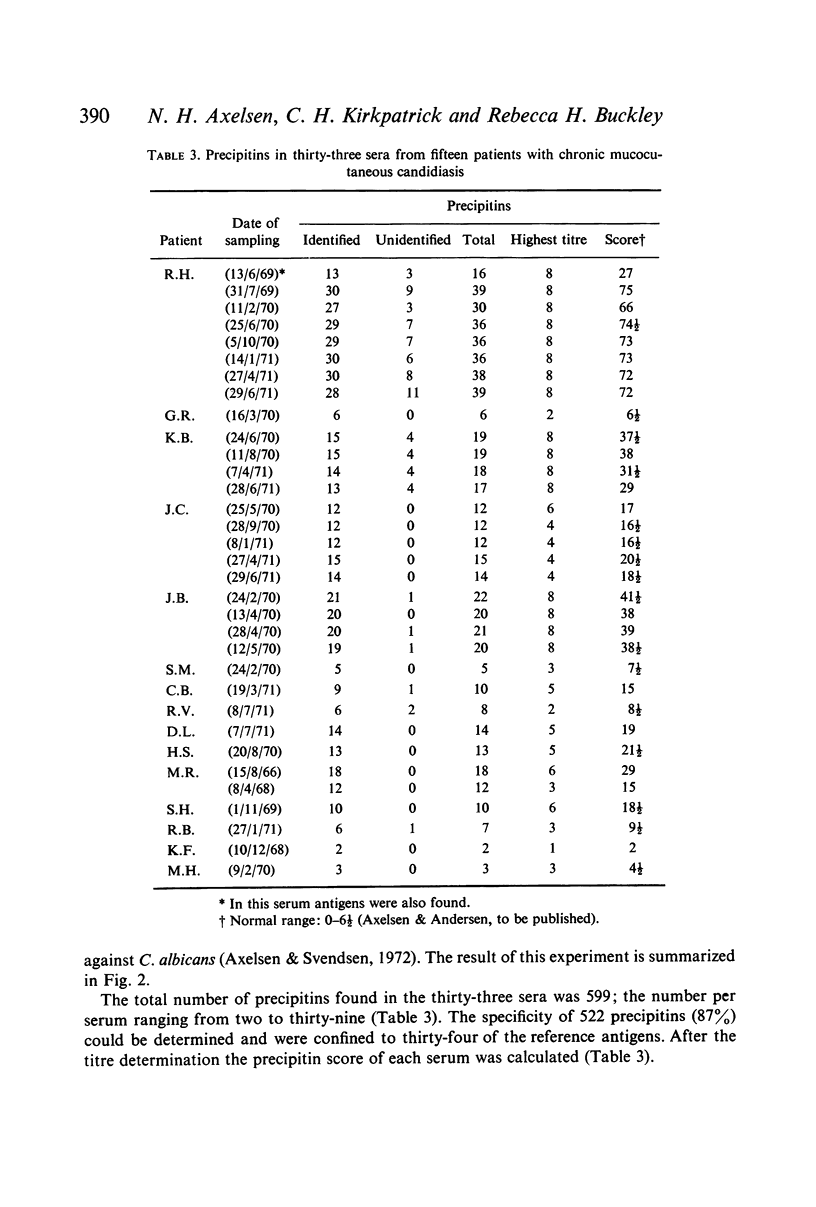
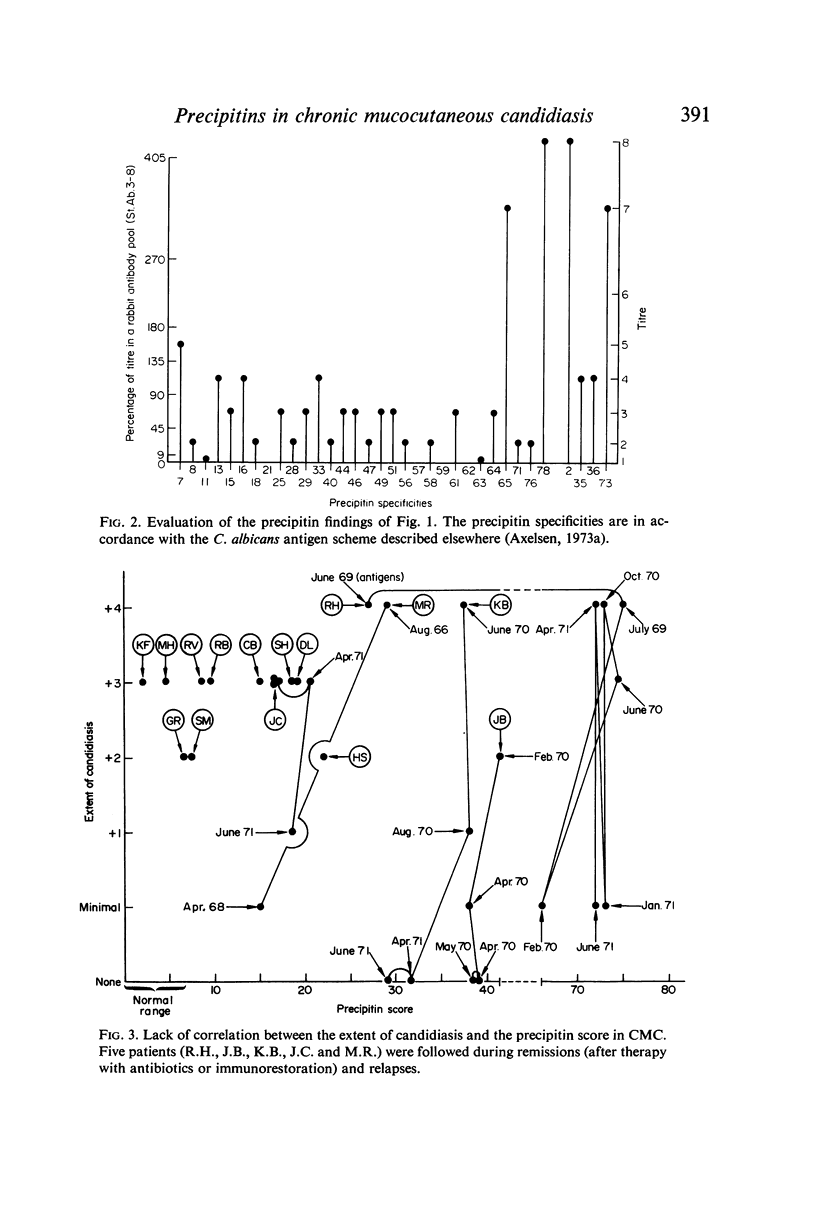
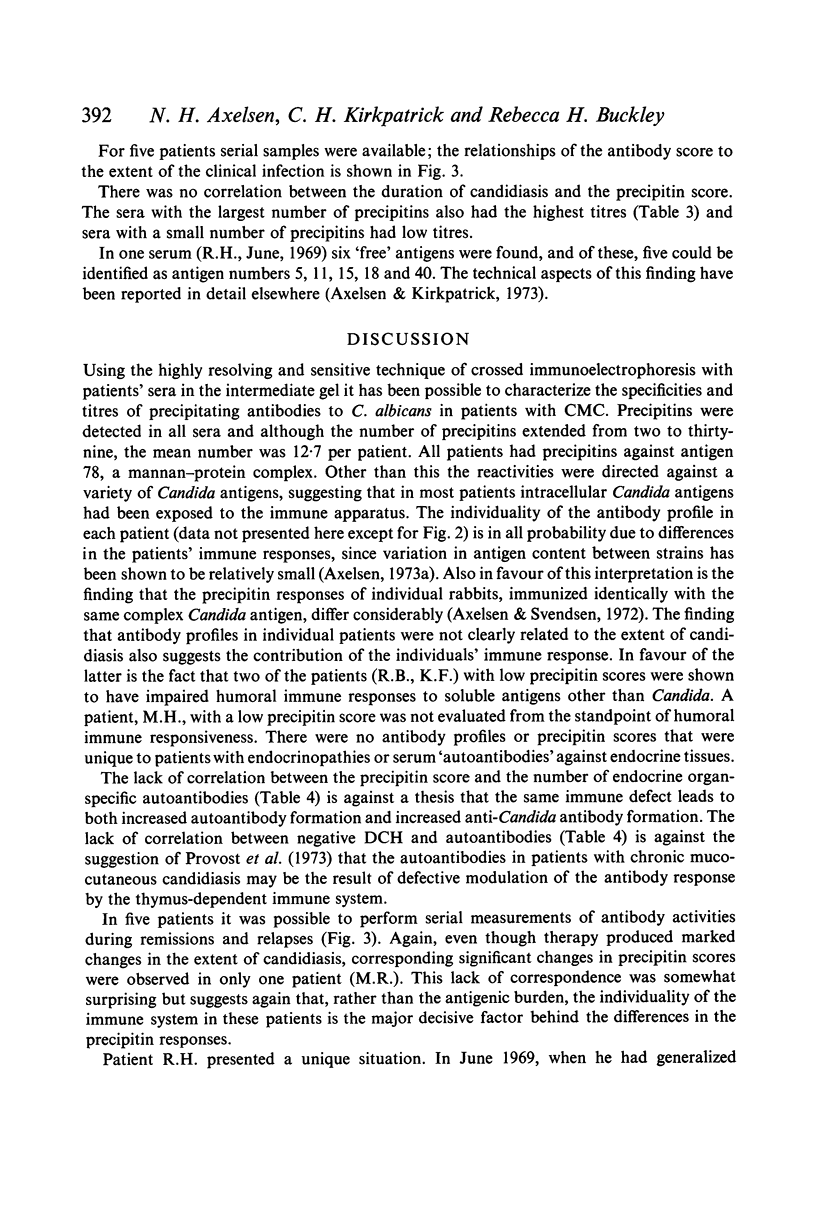
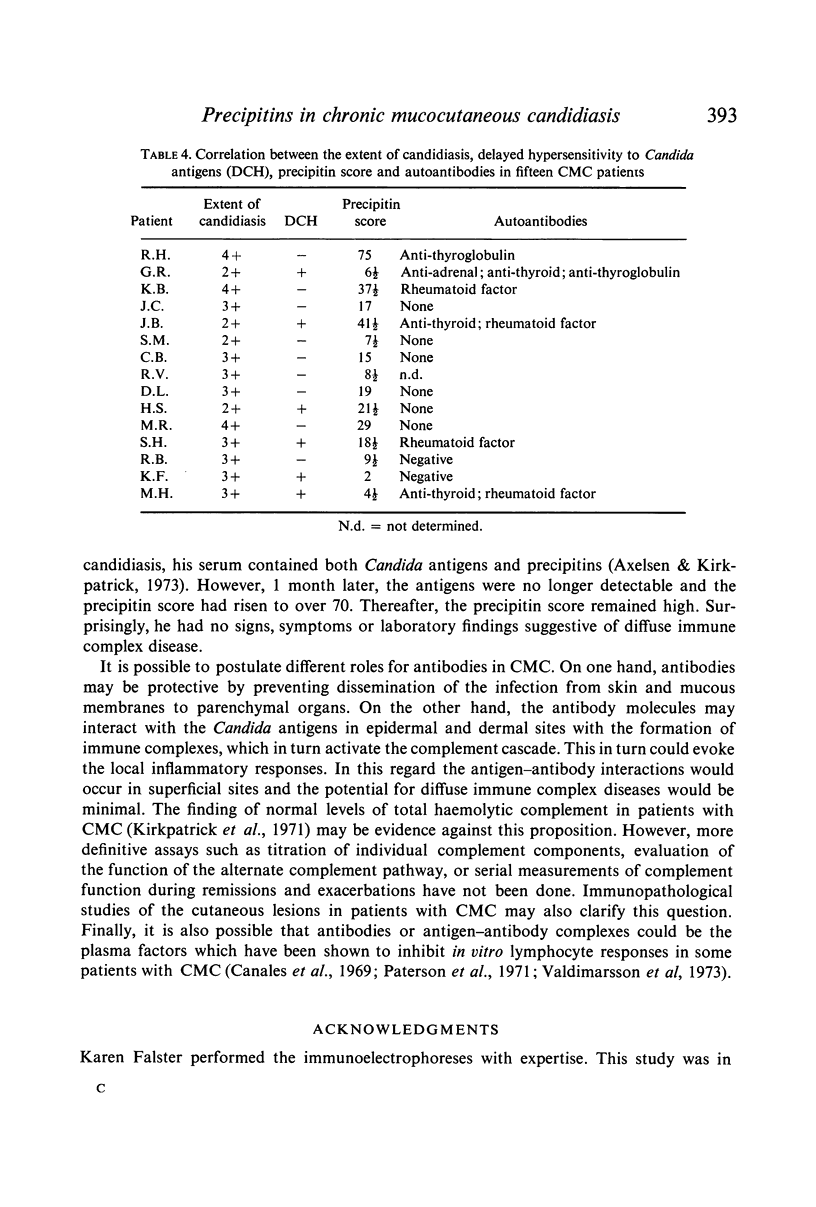
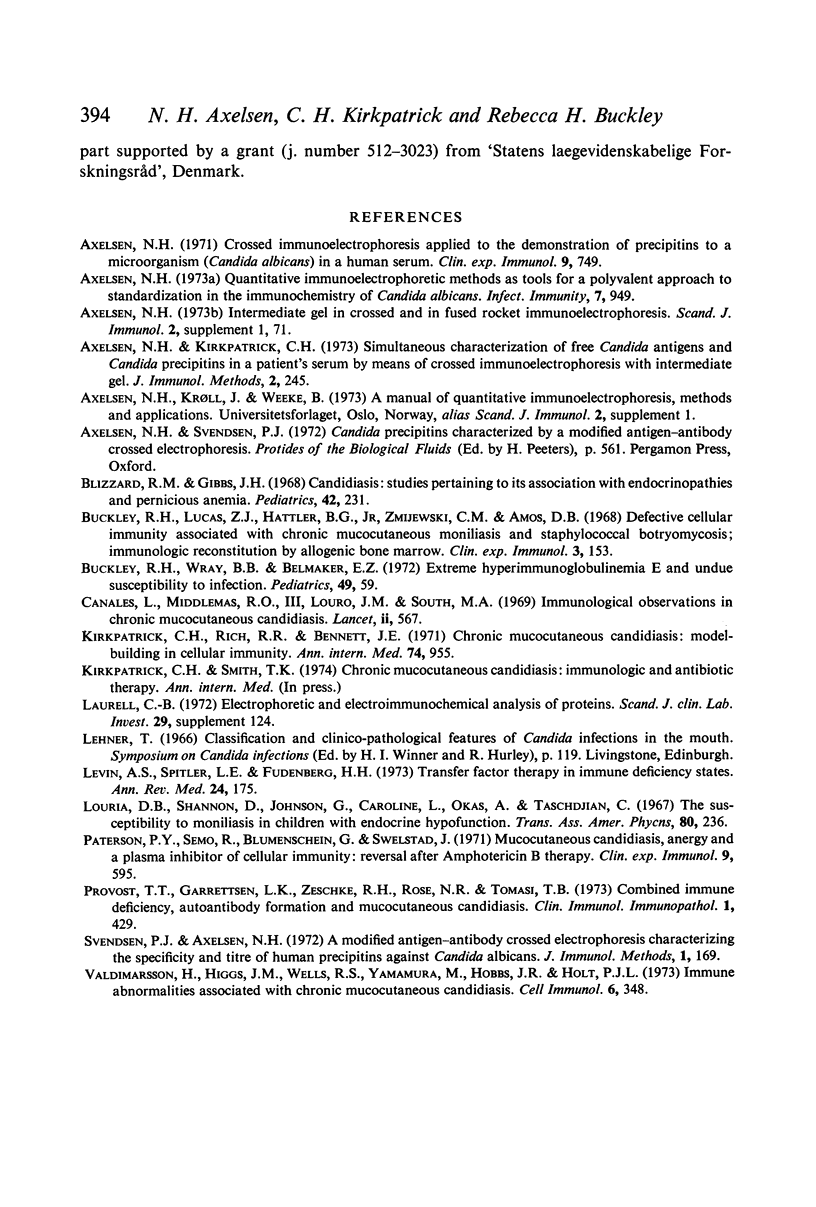
Images in this article
Selected References
These references are in PubMed. This may not be the complete list of references from this article.
- Axelsen N. H. Human precipitins against a micro-organism (Candida albicans) demonstrated by means of quantitative immunoelectrophoresis. Clin Exp Immunol. 1971 Dec;9(6):749–752. [PMC free article] [PubMed] [Google Scholar]
- Axelsen N. H., Kirkpatrick C. H. Simultaneous characterization of free Candida antigens and Candida precipitins in a patient's serum by means of crossed immunoelectrophoresis with intermidiate gel. J Immunol Methods. 1973 Apr;2(3):245–249. doi: 10.1016/0022-1759(73)90050-1. [DOI] [PubMed] [Google Scholar]
- Axelsen N. H. Quantitative immunoelectrophoretic methods as tools for a polyvalent approach to standardization in the immunochemistry of Candida albicans. Infect Immun. 1973 Jun;7(6):949–960. doi: 10.1128/iai.7.6.949-960.1973. [DOI] [PMC free article] [PubMed] [Google Scholar]
- Blizzard R. M., Gibbs J. H. Candidiasis: studies pertaining to its association with endocrinopathies and pernicious anemia. Pediatrics. 1968 Aug;42(2):231–237. [PubMed] [Google Scholar]
- Buckley R. H., Lucas Z. J., Hattler B. G., Jr, Zmijewski C. M., Amos D. B. Defective cellular immunity associated with chronic mucocutaneous moniliasis and recurrent staphylococcal botryomycosis: immunological reconstitution by allogeneic bone marrow. Clin Exp Immunol. 1968 Feb;3(2):153–169. [PMC free article] [PubMed] [Google Scholar]
- Buckley R. H., Wray B. B., Belmaker E. Z. Extreme hyperimmunoglobulinemia E and undue susceptibility to infection. Pediatrics. 1972 Jan;49(1):59–70. [PubMed] [Google Scholar]
- Canales L., Middlemas R. O., 3rd, Louro J. M., South M. A. Immunological observations in chronic mucocutaneous candidiasis. Lancet. 1969 Sep 13;2(7620):567–571. doi: 10.1016/s0140-6736(69)90264-5. [DOI] [PubMed] [Google Scholar]
- Kirkpatrick C. H., Rich R. R., Bennett J. E. Chronic mucocutaneous candidiasis: model-building in cellular immunity. Ann Intern Med. 1971 Jun;74(6):955–978. doi: 10.7326/0003-4819-74-6-955. [DOI] [PubMed] [Google Scholar]
- Levin A. S., Spitler L. E., Fudenberg H. H. Transfer factor therapy in immune deficiency states. Annu Rev Med. 1973;24:175–208. doi: 10.1146/annurev.me.24.020173.001135. [DOI] [PubMed] [Google Scholar]
- Louria D. B., Shannon D., Johnson G., Caroline L., Okas A., Taschdjian C. The susceptibility to moniliasis in children with endocrine hypofunction. Trans Assoc Am Physicians. 1967;80:236–249. [PubMed] [Google Scholar]
- Paterson P. Y., Semo R., Blumenschein G., Swelstad J. Mucocutaneous candidiasis, anergy and a plasma inhibitor of cellular immunity: reversal after amphotericin B therapy. Clin Exp Immunol. 1971 Nov;9(5):595–602. [PMC free article] [PubMed] [Google Scholar]
- Provost T. T., Garrettson L. K., Zeschke R. H., Rose N. R., Tomasi T. B., Jr Combined immune deficiency, autoantibody formation, and mucocutaneous candidiasis. Clin Immunol Immunopathol. 1973 Jul;1(4):429–445. doi: 10.1016/0090-1229(73)90001-9. [DOI] [PubMed] [Google Scholar]
- Svendsen J., Axelsen N. H. A modified antigen--antibody crossed electrophoresis characterizing the specificity and titre of human precipiting against Candida albicans. J Immunol Methods. 1972 Jan;1(2):169–176. doi: 10.1016/0022-1759(72)90044-0. [DOI] [PubMed] [Google Scholar]
- Valdimarsson H., Higgs J. M., Wells R. S., Yamamura M., Hobbs J. R., Holt P. J. Immune abnormalities associated with chronic mucocutaneous candidiasis. Cell Immunol. 1973 Mar;6(3):348–361. doi: 10.1016/0008-8749(73)90035-x. [DOI] [PubMed] [Google Scholar]



